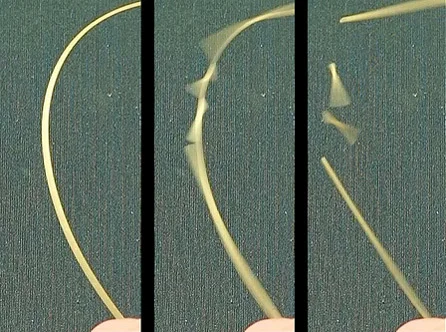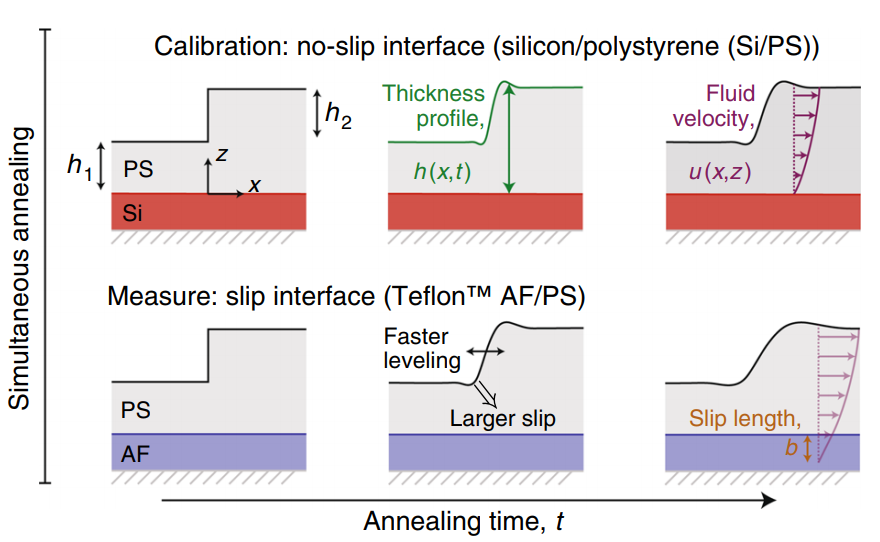In biological and engineered systems, an inherent trade-off exists between the force and velocity that can be delivered by a muscle, spring, or combination of the two. However, one can amplify the maximum throwing power of an arm by storing the energy in a bow or sling shot with a latch mechanism for sudden release. Ilton et al. used modeling to explore the performance of motor-driven versus spring-latch systems in engineering and biology across size scales. They found a range of general principles that are common to animals, plants, fungi, and machines that use elastic structures to maximize kinetic energy.
Modeling the Kinematics of Ultrafast Organisms
High Speed Mechanics of Soft Materials
Adsorption-induced slip inhibition for polymer melts on ideal substrates
Hydrodynamic slip, the motion of a liquid along a solid surface, represents a fundamental phenomenon in fluid dynamics that governs liquid transport at small scales. For polymeric liquids, de Gennes predicted that the Navier boundary condition together with polymer reptation implies extraordinarily large interfacial slip for entangled polymer melts on ideal surfaces; this Navier-de Gennes model was confirmed using dewetting experiments on ultra-smooth, low-energy substrates. Here, we use capillary leveling—surface tension driven flow of films with initially non-uniform thickness—of polymeric films on these same substrates. Measurement of the slip length from a robust one parameter fit to a lubrication model is achieved. We show that at the low shear rates involved in leveling experiments as compared to dewetting ones, the employed substrates can no longer be considered ideal. The data is instead consistent with a model that includes physical adsorption of polymer chains at the solid/liquid interface.



